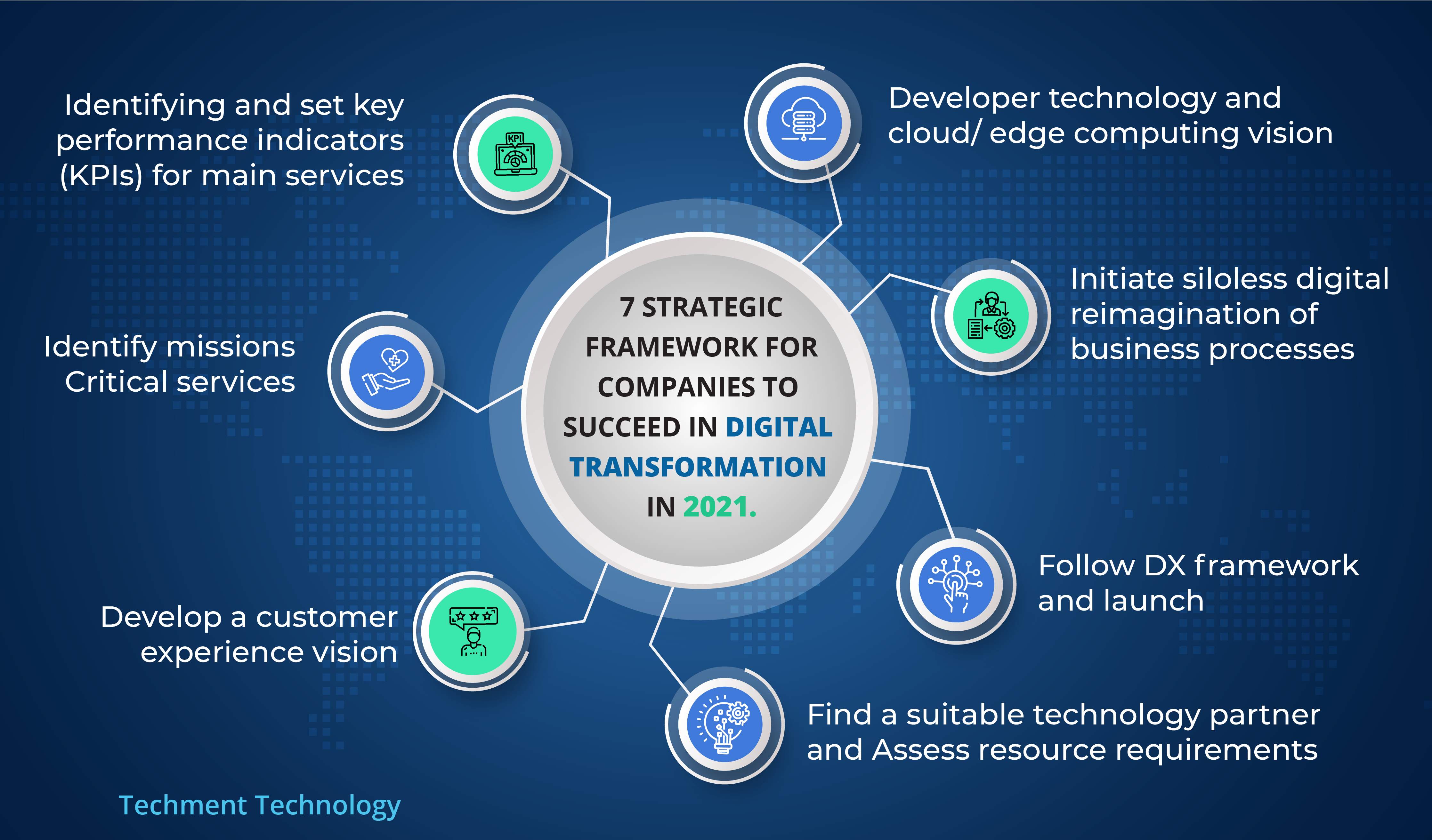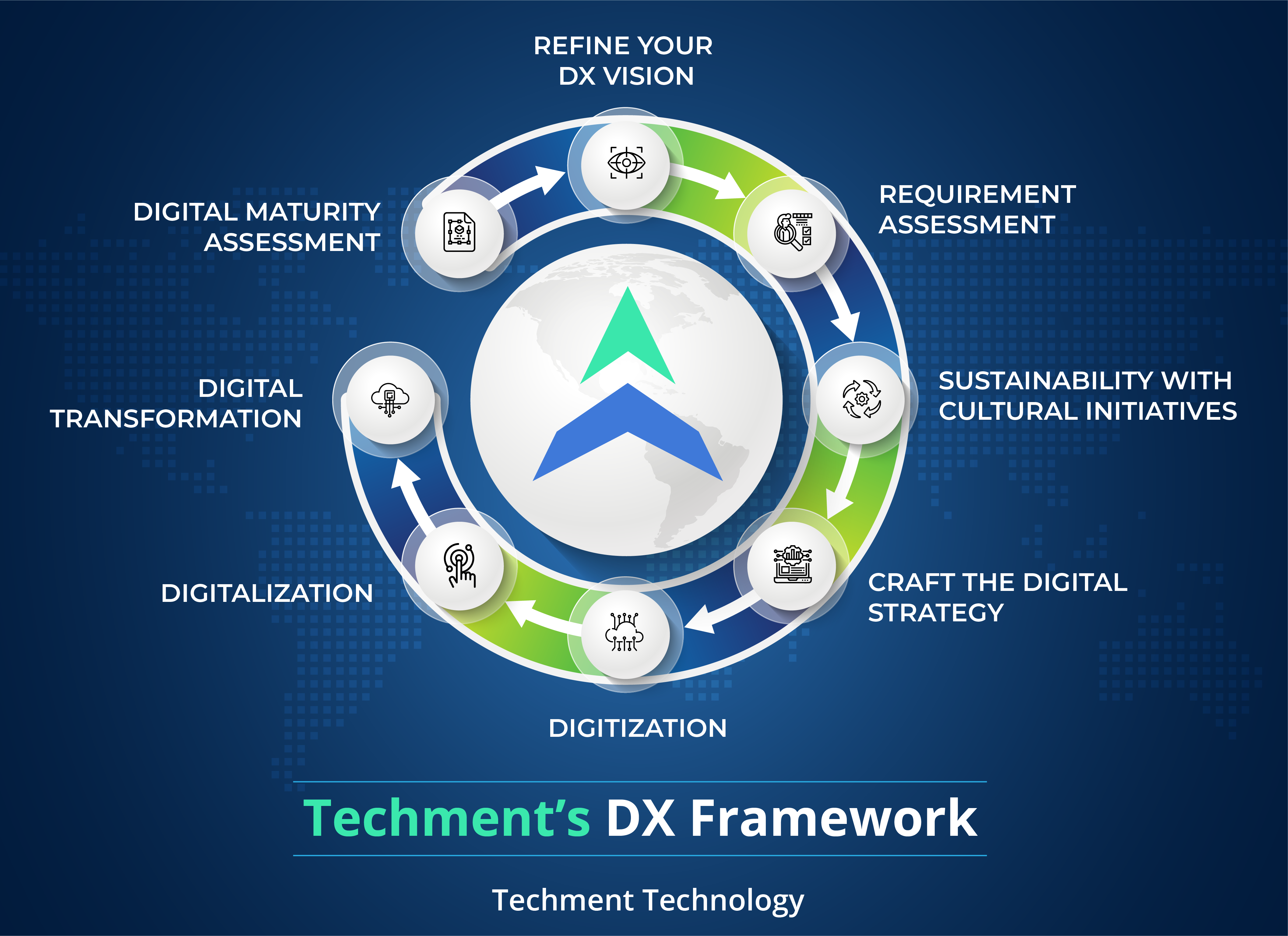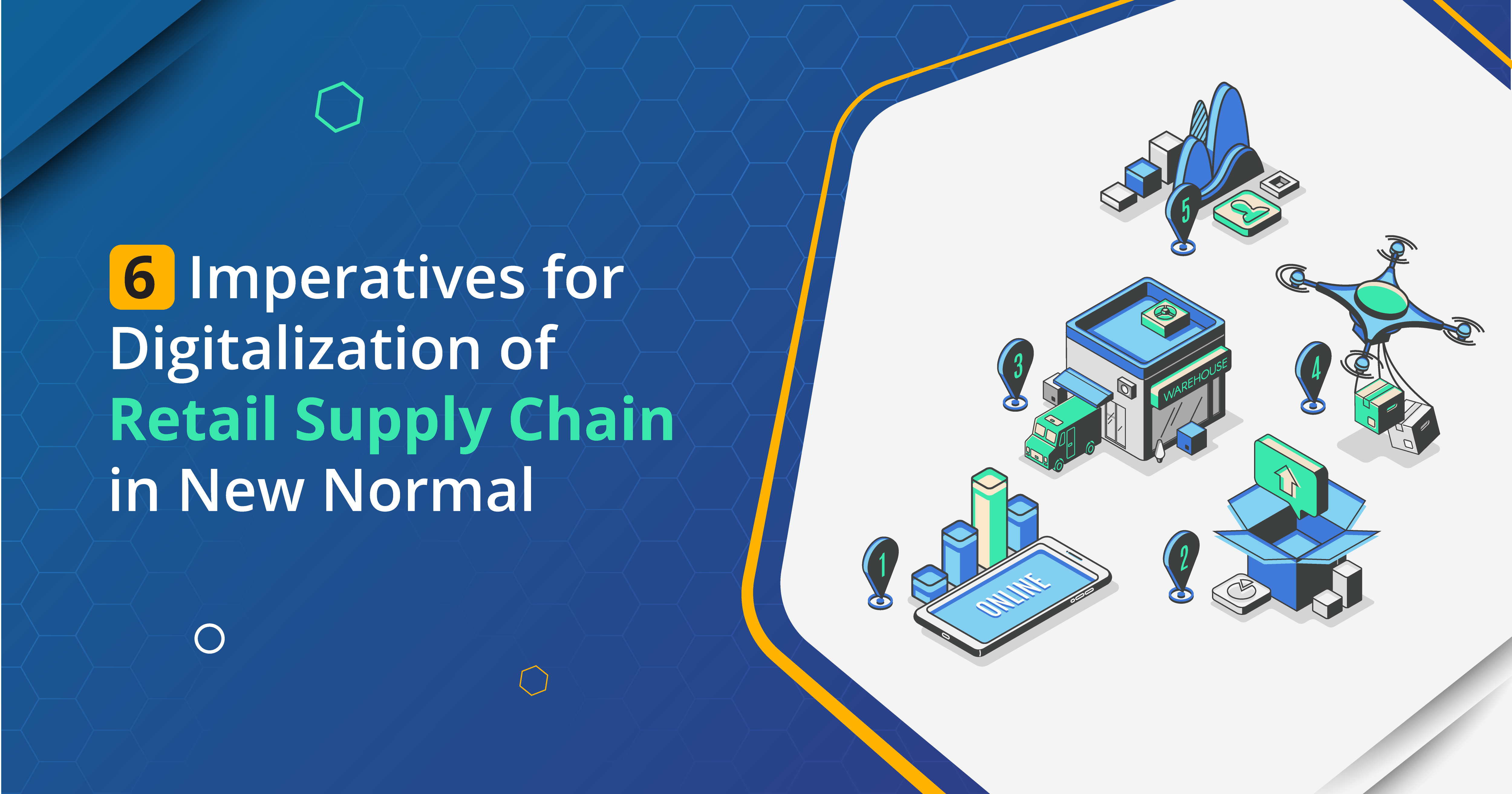Everyone has been talking about Digital Transformation (DX) for a while now, but in the aftermath of the pandemic, 2021 may become the historic year that divides winners and losers.
Many organizations that were ahead of the curve, pivoted with agility and further embraced the digital to support changes in the business model along with efficiency, productivity, and cost control.
Organizations have pivoted to entirely new business models to support flexibility, efficiency and cost control. Those
thriving organizations have embraced a digital service mindset.
Digital transformation is a risky enterprise and one that cannot be taken without a solid strategic framework and understanding. In this article, we give an seven-step strategic framework for companies to succeed in digital transformation in 2021.
- Develop a customer experience vision
- Developer technology and cloud/edge computing vision
- Identify missions medical services
- Identifying and set key performance indicators (KPIs) for main services
- Initiate siloless digital reimagination of business processes
- Find a suitable technology partner and Assess resource requirements
- Follow DX framework and launch

1. Develop a Digitally enabled Customer Experience Vision
Of all the things digital transformation is about, such as technology, data culture, process reinvention and business model redefinition, the most misunderstood fact is that DX is about improving customer experience. And everything about DX must be considered while keeping CX in mind. It is thus, the critical first step to think about; visualize your digitally enabled CX in the post-pandemic world
2. Develop Technology and Cloud/Edge computing vision
Each business is different, and to meet its needs, it takes a unique look at how technology will serve it best. As companies plunge into digitalization, it is essential to assess the requirement of technologies that will best serve its need. For instance, a logistics company thinking of heavily deploying IoTs must as well consider the deployment of AI/ML. While others would ace under the cloud, the above company may need to consider Edge computing for real-time decisions, cloud will fail short. Thus a clear vision helps companies move in the right direction.
3. Identify Missions Critical services
DX is such a large undertaking that it is difficult to find the ideal way to begin. The easiest way is to prioritize mission-critical services and digitize them first. Every part of the business needs to go digital else DX efforts will fail at the hands of silos. But those services that will have a direct and significant impact on CX must be transformed first.
4. Identifying and set Key Performance Indicators (KPIs) for Core Services
After identifying the starting point, it would be vital to have a good understanding of the KPIs of the services to ensure proper measurement and track goals. People in charge of the services will share their aspirations and what they want to achieve. IT and business teams can work together to monitor the progress.
5. Initiate siloless digital reimagination of business processes
Yes, more often than not, DX efforts result in silos that eventually prevent the efforts from coming to fruition. The only way to ensure that is to reimagine the process and ensure that each department speaks with the other. Data sharing not only streamlines the process it also results in unimaginable efficiency. The Digitization of old processes is a sure shot and the shortest road to failure.
6. Find a suitable technology partner and Assess resource requirements
The talent wars are already picking up as markets open, and tensions deescalate. Young companies and SMBs need not take the additional burden of managing technology; their focus can be best channelized in the service of business processes and excellence. A capable and trustworthy technology partner can make a lot of difference in the long run. Here are the challenges faced by the in-house tech team:
- IT talent attrition
- Upskilling challenges
- Technology Upgrades
- Still need for new SaaS software solutions
- Cost escalation
- Challenges with advanced technologies
7. Follow DX Framework and Initiate
There are many ways to approach DX, but a sound framework is the most significant element to follow during the entire journey.
Below is the model that can help companies pursuer DX by addressing all the essential elements:

The framework is a result of extensive research. You can get access to the white paper to get a granular view of the entire process of DX.
The Future as it Unfolds
DX is an urgent need today. But that does not make it an east process just because it is more acceptable. The challenging deadlines can make it even more confusing and result in more difficulty to measure.
A clear vision and strategic approach can make this journey rewarding and pleasant. It is not just about technology, but using it as a suitable means to the business end.
 All Posts
All Posts


